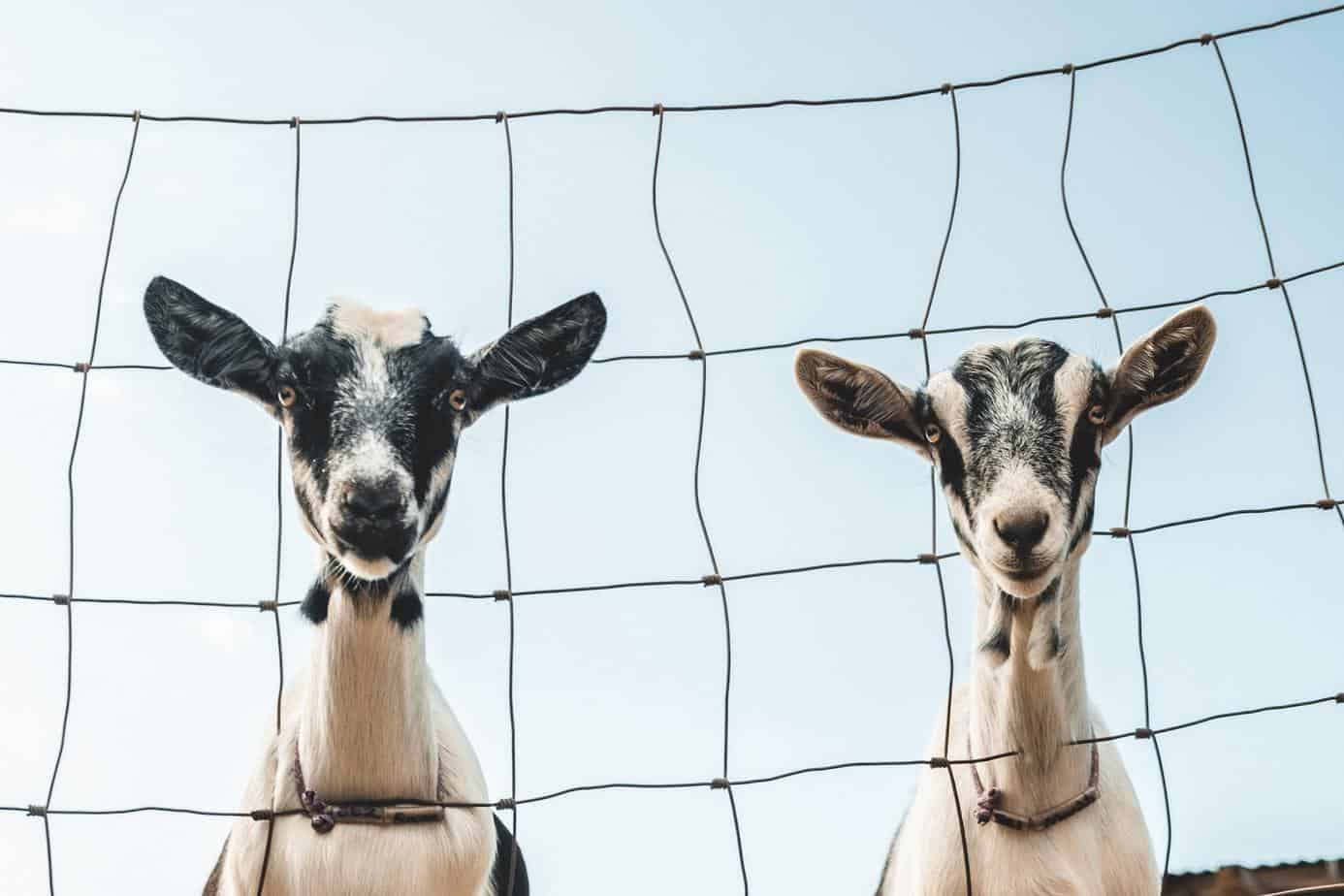Cattle panels and other types of fencing really serve two purposes on a homestead. The first purpose is to provide a psychological barrier. In this case, animals see the fence and in time come to understand they can’t go past it. The second is to provide the actual physical barrier which, if animals do decide to wander off, should stop them. But fencing that works for one animal does not necessarily work for others. And it’s not just a matter of size. Erecting an eight-foot wall of chicken wire around your prized quail may keep them in, but doing the same for your hog enclosure, for example, is unlikely to do much for long. Whether you can use cattle panels for other animals depends heavily on the animals you are trying to contain.
Before we look at whether you can use cattle panels for other animals, we need to know what it is…
What is cattle panel fencing?
Cattle panel fencing – also known as cattle paneling – is a form of livestock enclosure usually made out of strong metal wire or tubing that is either dug into the ground or attached directly to wooden or metal fence posts. It is suitable for some animals but not others.
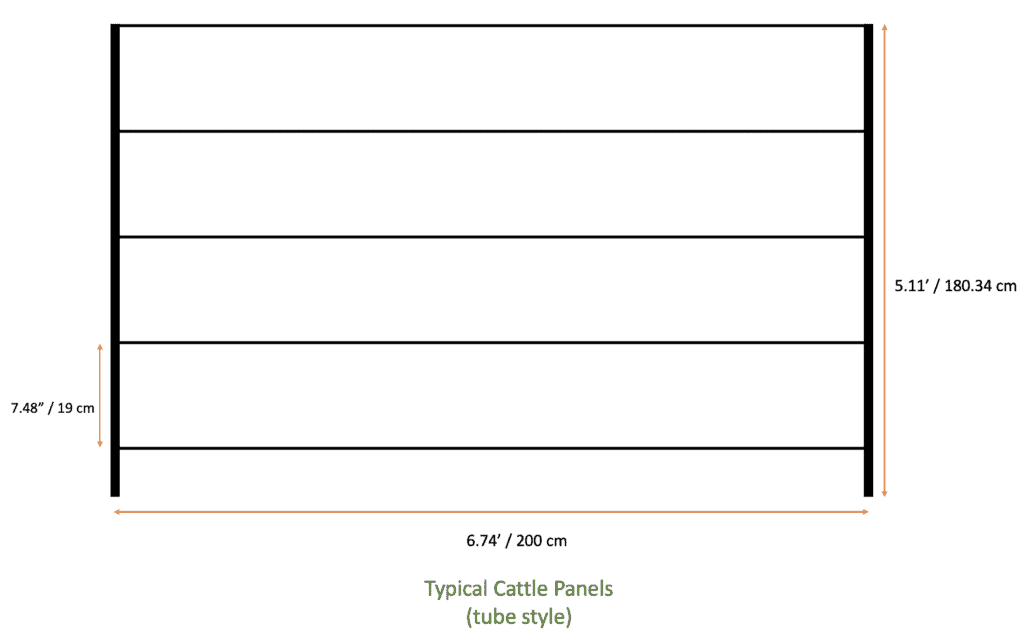
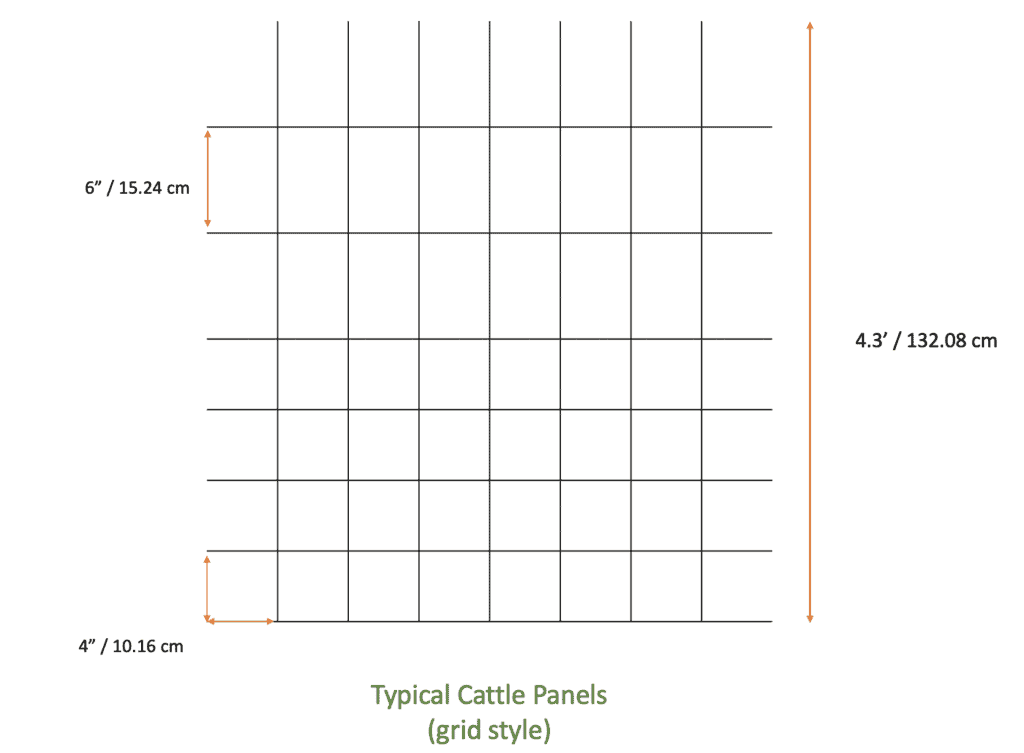
Can you use cattle panels for goats?
Generally speaking, it should be fine to use cattle panels for goats. As any goat owner knows, goats will try their very hardest to escape no matter what you put them in. Cattle panels are certainly strong enough to hold them in, but that’s not the end of it. What you need to consider are the gaps in the fencing relative to the size of the goats. For most breeds of fully grown goat, the fencing should be fine as is. But if you have kids or pygmy goats, you should consider carefully whether they might be able to squeeze through the paneling. This is especially the case for tubed cattle panels as opposed to the full grid structure.
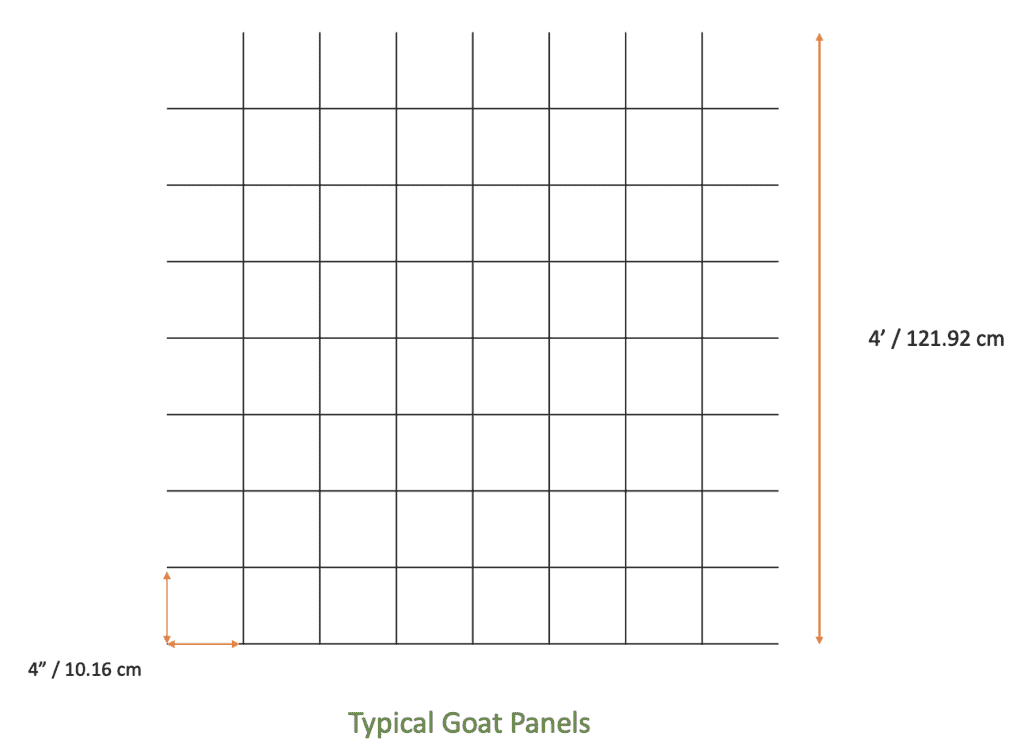
Even if an animal can’t fully get through a fence, you still need to ensure it can’t squeeze a body part through the gaps. This risks trapping, or worse, serious injury and even death. Countless animals strangle themselves in fences every year for this very reason. Animal fencing is, of course, specifically designed for the type of animal that it is advertised for. For example, cattle panels demonstrably are designed for cows. That is not to say that you can’t use cattle panels for other animals, just that you should take precautions. You must make sure that you know the fencing is suitable for the type of animal you want to enclose.
If you want to use cattle panels for goats but are worried about your animals being small enough to get through the gaps, you can always reinforce the lower sections of the paneling with another type of fencing, such as strong chicken wire. This won’t add much to the strength of the enclosure, but it may well stop mischievous goats from sticking their heads or legs through the paneling. This is a good solution for small kids, as when they grow up, you can simply remove the chicken wire and use it for something else.
Can you use cattle panels for horses?
Generally speaking again, it is not a good idea to use cattle panels for horses. Much of the reason for this has nothing to do with the strength of the horses, as cows can be just as strong as horses of course, but rather reducing the risk of injury to the horse’s legs and hooves.
Horses have a tendency to repeatedly bang their hooves on surfaces to make noise. Especially when they’re hungry in the morning! With certain types of cattle paneling, this could be dangerous. With tube fencing, this is a particular problem because horses can try to get their feet up on the bars. If they do this, they may end up slipping through and injuring themselves.
Even with non-tubed cattle panels, there tend to be a number of sharp edges on cattle fencing that pose a particular risk to horses who like to rub up again walls and fences to scratch themselves. In these situations, horses can easily scratch themselves deeply, requiring stitches and antibiotics. Remember, the backs of horses’ legs are particularly sensitive areas. There is a complex web of ligaments around the cannon bone in their lower legs. Ligament recovery can take weeks or even months. Such injuries may even retire a horse from its usual duties.
These issues are not as prevalent with fencing that has smaller gaps, because horses generally can’t get their hooves through (or at least not fully). That said, cattle panels with smaller gaps tend not to be as high or as strong. Those factors in and of themselves may make cattle panels not suitable for horses.
As with using cattle panels for other animals, you may be able to reinforce the fencing somehow to prevent risks.
What about cattle panels for hogs and pigs?
If you intend to use cattle panels for hogs and pigs, many of the same considerations apply. Depending on the breed, you may need to pay particular attention to the size of the gaps in the fencing. Obviously, piglets – especially from small breed pigs like the Mulefoot Hog or Yucatan breed – are of a size that they could get their head stuck in the paneling, or even get all the way through it and escape.
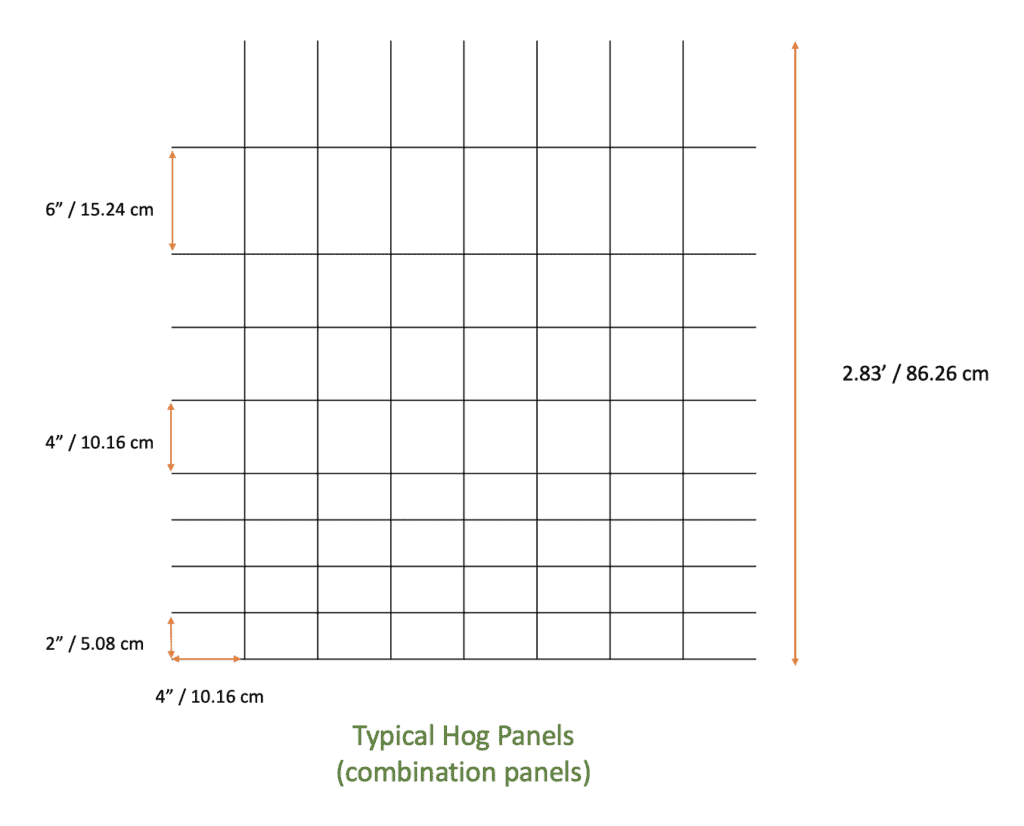
Farming product designers are, of course, aware of this. This is why you will often see hog fencing as a specific type of product category in stores. Hog fencing has smaller holes at the bottom of the fence that get larger towards the top. This is often called ‘combination fencing’. Combination fencing allows you to use the fence for whatever life stage your animals are at. It should be just as safe to leave piglets in the enclosure as it would full-size hogs and pigs. This is an important consideration if you want to build a permanent enclosure. Combinations fencing avoids the hassle of switching out fencing or having to reinforce that fencing with other things.
One last thing to remember about using cattle panels for hogs and pigs is that if you have a solo boar, he will probably try to smash his way out of the fencing from the get-go no matter how much you reinforce the fence. The solution, however, may be simpler than it seems: introduce a mate. Randy boars can often succeed in escaping numerous times until they have a lady to occupy them.
Is cattle panel fencing suitable for sheep?
Basically, the same rules apply to sheep as do goats and hogs. Generally, you can use cattle panels for sheep only if there is no risk of the sheep. Again, consider the risk of escaping through holes, getting heads or limbs stuck in the fencing, or otherwise injuring themselves on the enclosure.
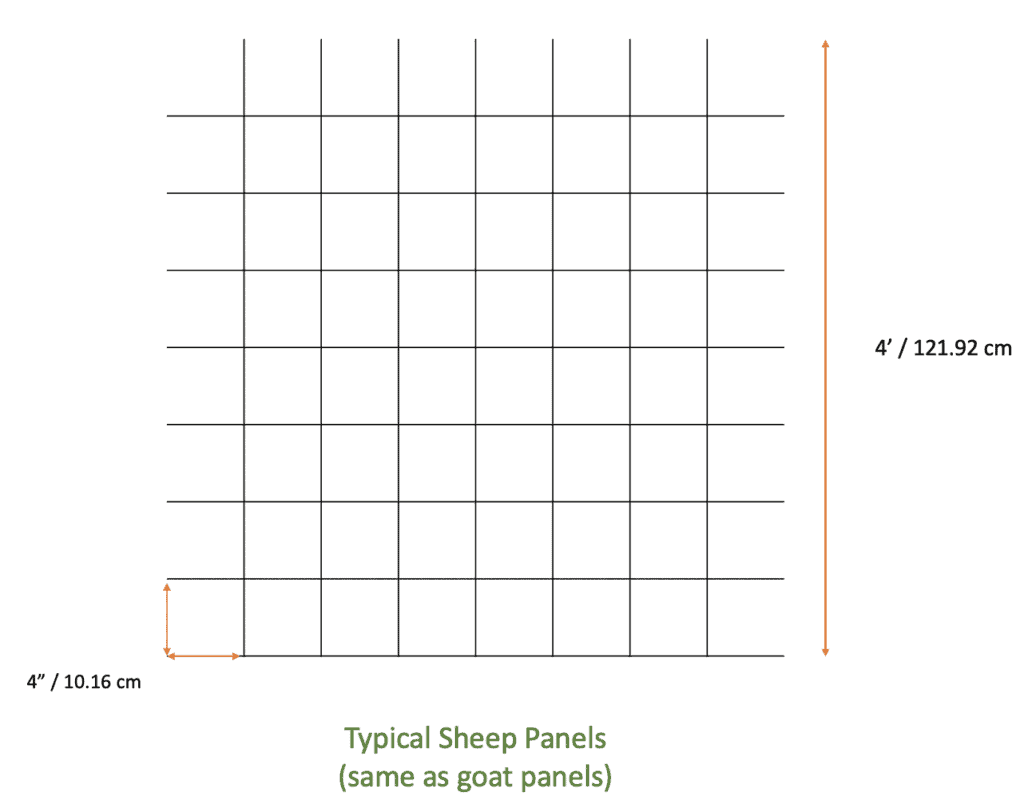
Because sheep have fur (it is only considered ‘wool’ when it is detached from the skin), there is the additional concern of whether the fur is likely to get stuck in the fencing. A sheep will scratch itself against fencing, leaving big clumps of wool dotted along the enclosure. While having wool or fur in a fence happens with many haired animals all the time, it can be a problem if you have a special long-haired or longwool sheep breeds like Shetland, Merino, and Lincoln sheep.
If you do use cattle panels for sheep, it is likely that you will choose the lightweight cattle paneling. This is definitely the type more suitable to small animals like sheep. If you have larger tubing panels available, you may in any case find that using them for small animals is overkill and a hassle when it comes to feeding and otherwise caring for animals in the enclosure.
Are cattle panels any use for birds?
In 99% of cases, you cannot use cattle panels for birds without some form of reinforcement. Many people make chicken, duck, and geese enclosures from old livestock panels they have lying around. This is a great way to reduce waste and save money, but ultimately that paneling is not suitable. Most of the time, cattle panels have too large gaps for keeping birds safe. Not only could birds escape, but predators like foxes and coyotes could easily squeeze through the gaps.
The only real way that cattle paneling can be used with birds is as a strong ‘base’ structure onto which you attach chicken wire or other types of fencing that will keep the flock safe.


